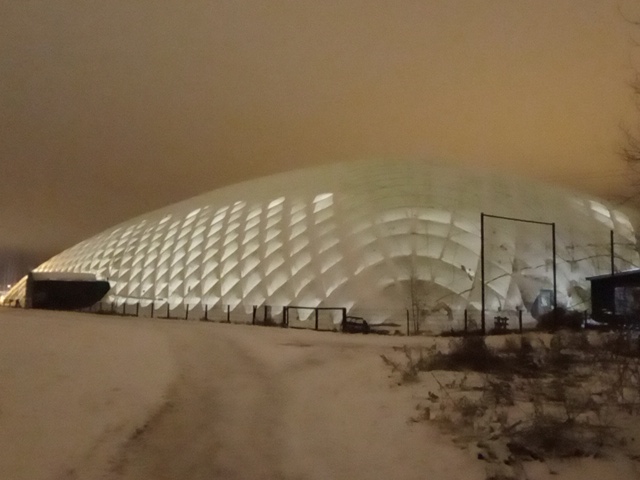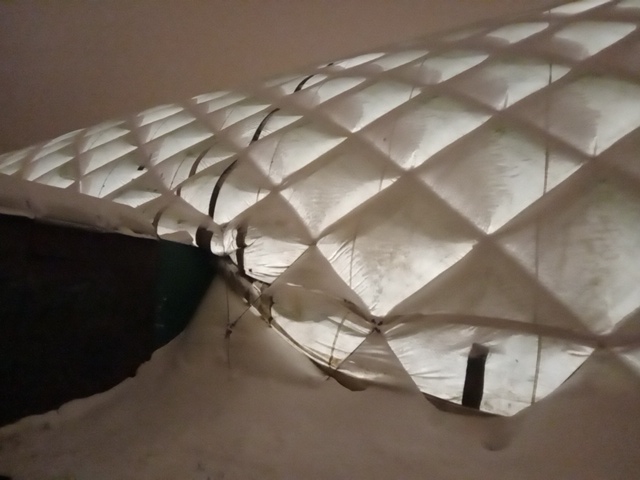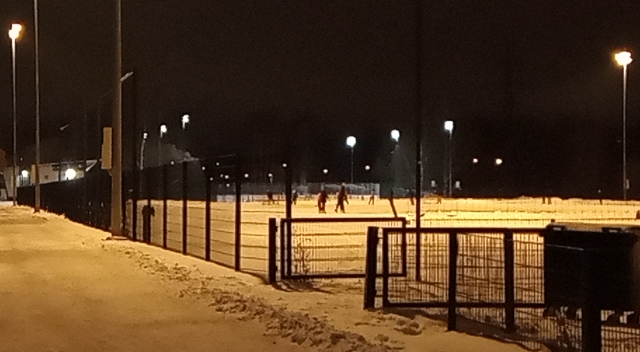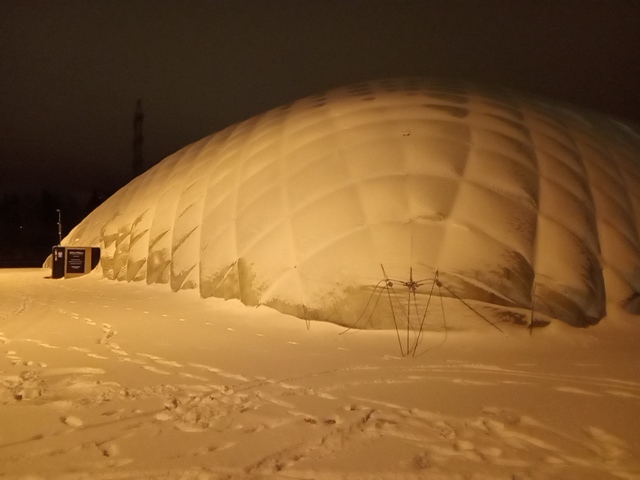Bubble domes
2021-12-29
It snowed today, and I went on a long walk, and found that this bubble dome looks pretty cool, illuminated from the inside. Light pollution from the city also colours the sky this pinkish orange hue that's really hard to capture on camera; as the low-pressure sodium lamps are gradually replaced with LEDs the sky has gotten more pink and less orange.


The dome has been patched quite a bit.
These air-supported domes are a rather common sight in wintertime Finland; the Finnish name for them, kuplahalli, translates to bubble hall. When winter comes, football fields that aren't simply left unused are either iced over and turned into an ice-skating rink (as has happened to the field next to the air dome) or covered under the bubble material and inflated. I'm sure these exist elsewhere, they're just quite common here.

There were many ice skaters on the field today, quite a few young kids also.

I like the structural engineering of these domes, it's simple yet clever. It's "just" a square of multi-layer material, like a plastic tarp, with the layers more for insulation than anything, and a constant supply of higher-than-ambient-pressure air. It's not even that airtight: the edges of the dome aren't cemented down or anything, they're just held down by the tautness of the cables, so a slight stream of air continuously escapes from the bottom edges and around the sides of the doors. The entrance, on the left of the image above, contains a revolving door. As kids we were taken to similar bubble halls, and we would bounce ourselves off the walls when on the outside; it's really rather soft, and the pressure differential isn't that large, but it does require some force to rotate the revolving door. On the far right edge of the first picture, at the top of the page, is a hut attached to the side of the dome; a constant buzzing noise, like a fridge compressor but louder, emanates from it.
I wonder how many different geometries of the hold-down net they considered before settling on just a diagonal grid. Was a hexagonal grid ever considered? Or a triangular one? I suspect the weight savings of a hexagonal grid (requires less wire per enclosed surface area) aren't worth it, given how easy a square grid is, not even requiring each intersection to necessarily be connected.